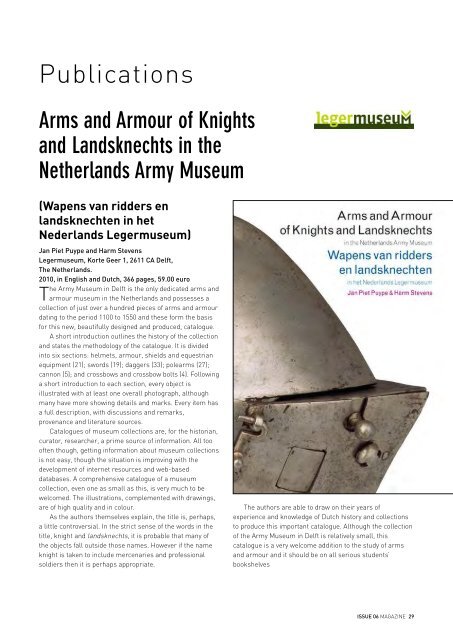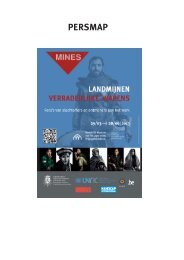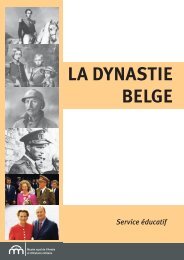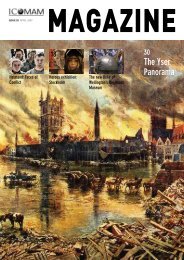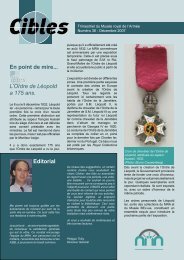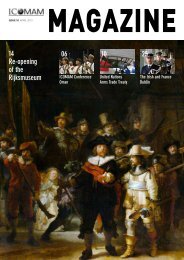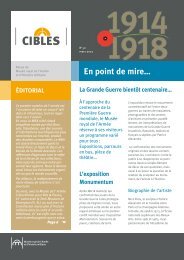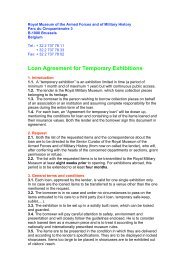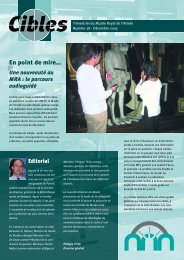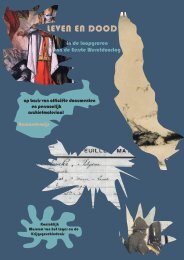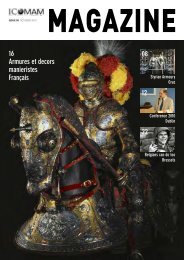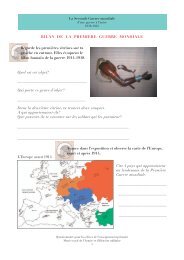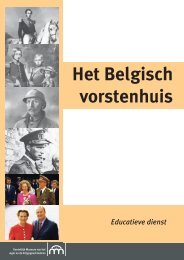Download issue 06 (High resolution) April 2011 (PDF, 3,9 MB)
Download issue 06 (High resolution) April 2011 (PDF, 3,9 MB)
Download issue 06 (High resolution) April 2011 (PDF, 3,9 MB)
Create successful ePaper yourself
Turn your PDF publications into a flip-book with our unique Google optimized e-Paper software.
Publications<br />
Arms and Armour of Knights<br />
and Landsknechts in the<br />
Netherlands Army Museum<br />
(Wapens van ridders en<br />
landsknechten in het<br />
Nederlands Legermuseum)<br />
Jan Piet Puype and Harm Stevens<br />
Legermuseum, Korte Geer 1, 2611 CA Delft,<br />
The Netherlands.<br />
2010, in English and Dutch, 366 pages, 59.00 euro<br />
The Army Museum in Delft is the only dedicated arms and<br />
armour museum in the Netherlands and possesses a<br />
collection of just over a hundred pieces of arms and armour<br />
dating to the period 1100 to 1550 and these form the basis<br />
for this new, beautifully designed and produced, catalogue.<br />
A short introduction outlines the history of the collection<br />
and states the methodology of the catalogue. It is divided<br />
into six sections: helmets, armour, shields and equestrian<br />
equipment (21); swords (19); daggers (33); polearms (27);<br />
cannon (5); and crossbows and crossbow bolts (4). Following<br />
a short introduction to each section, every object is<br />
illustrated with at least one overall photograph, although<br />
many have more showing details and marks. Every item has<br />
a full description, with discussions and remarks,<br />
provenance and literature sources.<br />
Catalogues of museum collections are, for the historian,<br />
curator, researcher, a prime source of information. All too<br />
often though, getting information about museum collections<br />
is not easy, though the situation is improving with the<br />
development of internet resources and web-based<br />
databases. A comprehensive catalogue of a museum<br />
collection, even one as small as this, is very much to be<br />
welcomed. The illustrations, complemented with drawings,<br />
are of high quality and in colour.<br />
As the authors themselves explain, the title is, perhaps,<br />
a little controversial. In the strict sense of the words in the<br />
title, knight and landsknechts, it is probable that many of<br />
the objects fall outside those names. However if the name<br />
knight is taken to include mercenaries and professional<br />
soldiers then it is perhaps appropriate.<br />
The authors are able to draw on their years of<br />
experience and knowledge of Dutch history and collections<br />
to produce this important catalogue. Although the collection<br />
of the Army Museum in Delft is relatively small, this<br />
catalogue is a very welcome addition to the study of arms<br />
and armour and it should be on all serious students’<br />
bookshelves<br />
ISSUE <strong>06</strong> MAGAZINE 29


